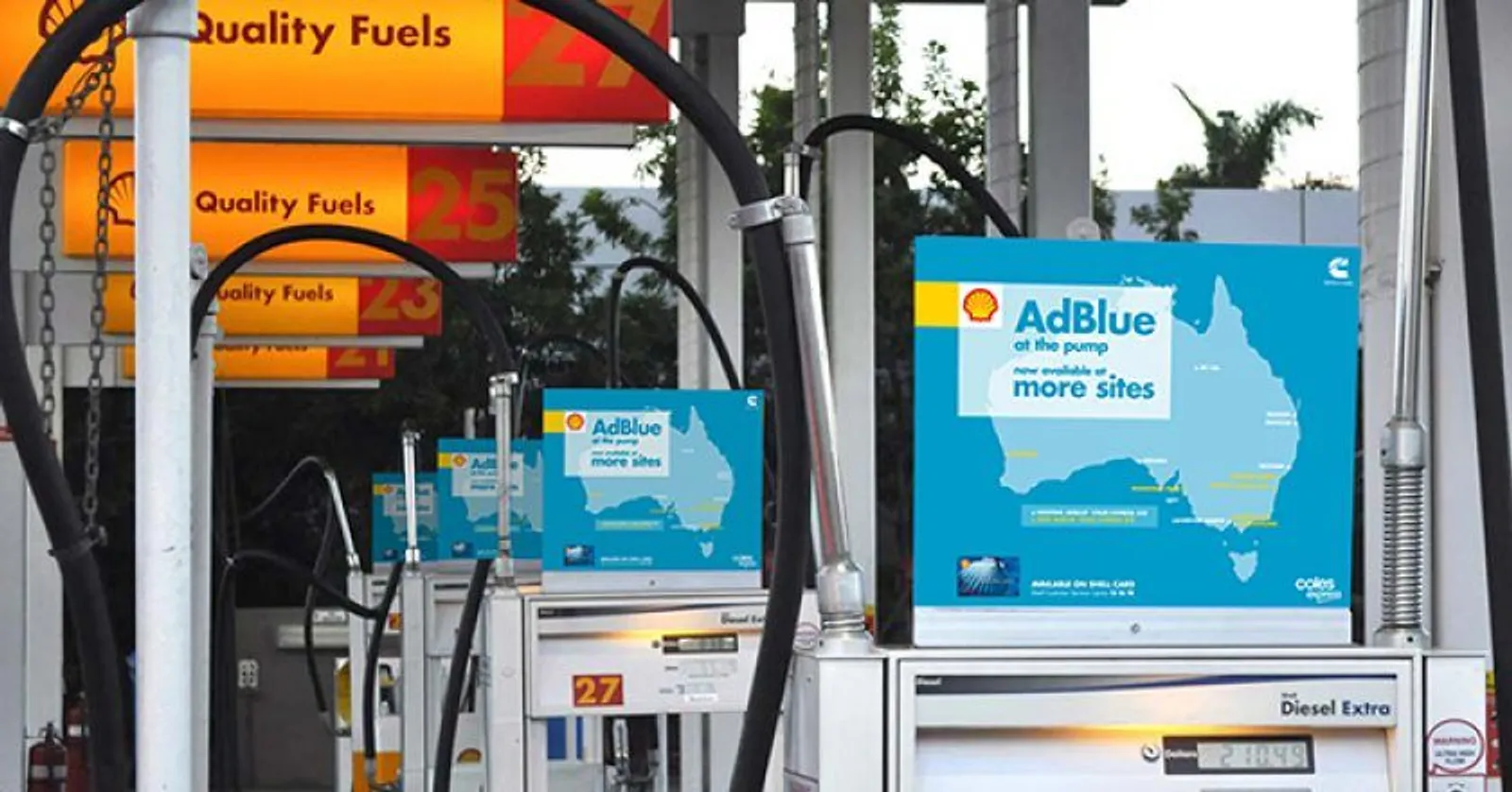Seemingly out of the blue, AdBlue has entered the motorhomers’ lexicon. A quick browse through social media pages shows it’s causing great confusion, so it’s time to explain what it is, why it’s needed and which vehicles require it. First, however, some background…
In the global quest to reduce motor vehicle exhaust emissions, varying international standards have been introduced. While Europe and America set the highest standards, we have our own Australian Design Rules (ADRs), but they lag a fair way behind best practice. Because our market is tiny in the global scheme of things, our ADRs are aligned with European values, although we also accept equivalent American and Japanese standards.
It’s worth noting America sets the toughest emission standards. It is also most stringent in initial and on-going testing; the latter uncovering Volkswagen’s criminal manipulation of software to defeat emissions monitoring checks – nicknamed Diesel Gate – and which lead to the company paying out US$25 billion in fines and damages (and counting). The two major differences between the US and European Union (EU) systems are the US has a single national authority – the Environmental Protection Agency – and sets the same emissions standards for petrol and diesel engines. By contrast, Europe has a single overall emissions standard, but allows manufacturers to choose between Type Approval authorities and testing facilities, and has different emissions standards for petrol and diesel engines. Some EU member states are less stringent than others in their application of the blanket European standards and some manufacturers are known to cross borders to have their engines certified under more ‘favourable’ conditions.
In 1992 the European Union introduced Euro 1 emissions standards, with Euro 2, 3, 4, 5 and 6 following in 1996, 2000, 2005, 2009 and 2014, respectively. Euro 7 is slated for 2025, but is still to be confirmed.
Australia’s current, minimum emissions standards are based on Euro 5 for both light and heavy vehicles. The Federal Government is currently considering Euro 6 standards for light vehicles, but maintaining Euro 5 for heavy vehicles. The main difference between the two is the allowed level of damaging nitrogen oxides (NOx), which are 180 mg/km for Euro 5 engines and 80 mg/km for Euro 6.
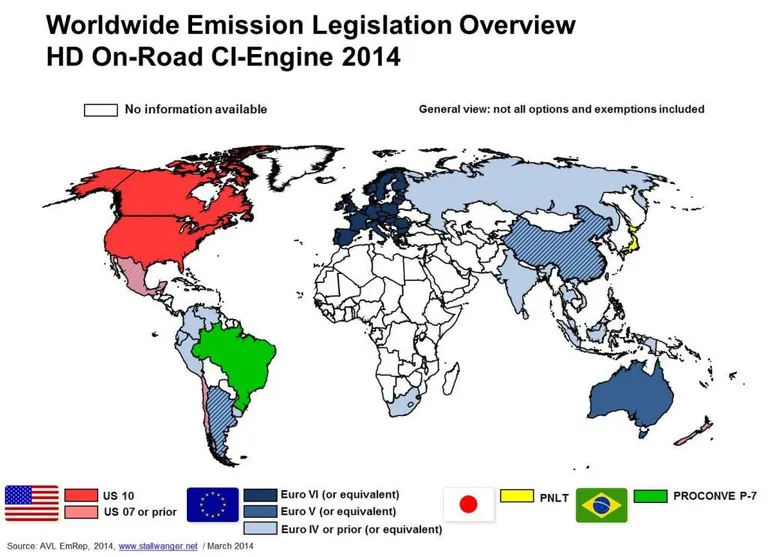
Double Standards
While Euro 6 has been the EU standard since 2014, manufacturers have effectively been able to ‘dump’ dirty-engined vehicles in Australia ever since. However, it’s only a matter of time until new ADR standards are mandated and Euro 6 becomes the norm for cars and light commercial vehicles.
To achieve the required reduction in NOx, two competing technologies are employed: Exhaust Gas Recirculation (EGR) and Selective Catalytic Reduction (SCR). In a nutshell, EGR is simpler but less effective because it reduces power and is detrimental to engine longevity, while SCR is costlier but cleaner and doesn’t affect engine power or life.
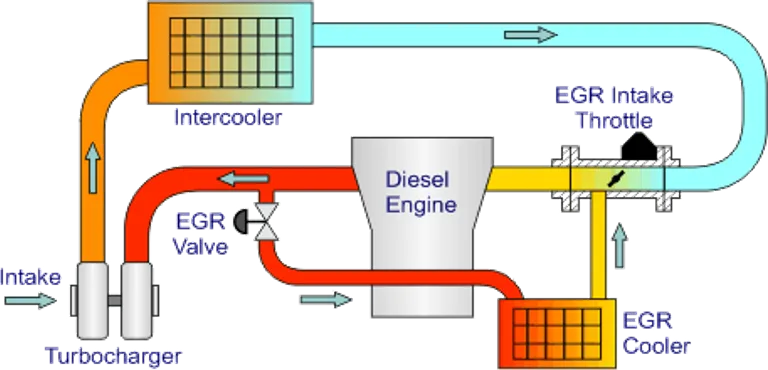
Exhaust Gas Recirculation works by mixing some cooled exhaust gas with fresh air on its way into the cylinders for combustion. Because the exhaust gas can’t be burnt again it lowers the temperature inside the cylinders – very high temperatures being the source of NOx.
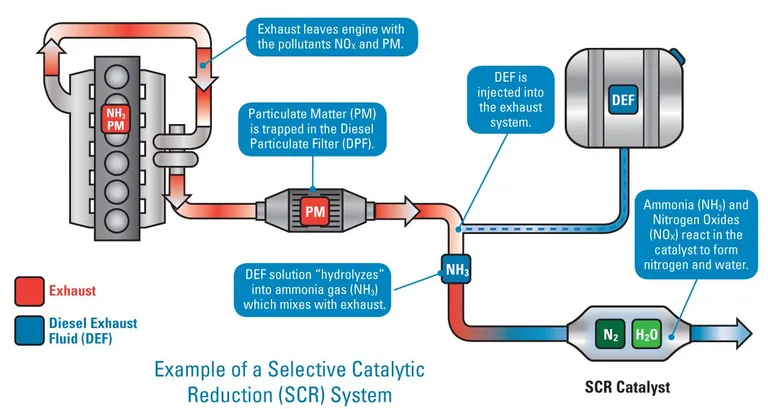
Selective Catalytic Reduction works by spraying a very small amount of a special liquid through a catalyst into the exhaust stream. The resultant chemical reaction converts NOx into nitrogen, water and tiny amounts of carbon dioxide, which exit via the exhaust pipe.
While both systems are effective and some Euro 6 engines employ it, SCR is the future due to its ability to reduce NOx by more than 90 percent without adverse effect on power or longevity.
DEF or What?
The special liquid used in the SCR process is called Diesel Exhaust Fluid or DEF. Typically made from one-third synthetic urea and two-thirds deionised water, DEF is also called Aqueous Urea Solution, but better known as AdBlue.
Manufacturers say the rate of AdBlue consumption can be roughly calculated at five percent of normal fuel consumption. Interestingly, looking at Fiat’s guide to AdBlue consumption for the latest Ducato, consumption is highest at highway speeds and lowest in urban operation. That’s the reverse of normal fuel figures and possibly due to the high volume of exhaust gas from an engine operating at highway speeds.
AdBlue is increasingly available ‘at the pump’ in truck stops and major service stations for between $0.80 and $1.00 per litre. It’s also available in containers from auto accessory stores and some service stations, but at anything up to $10 per litre, depending on container size!
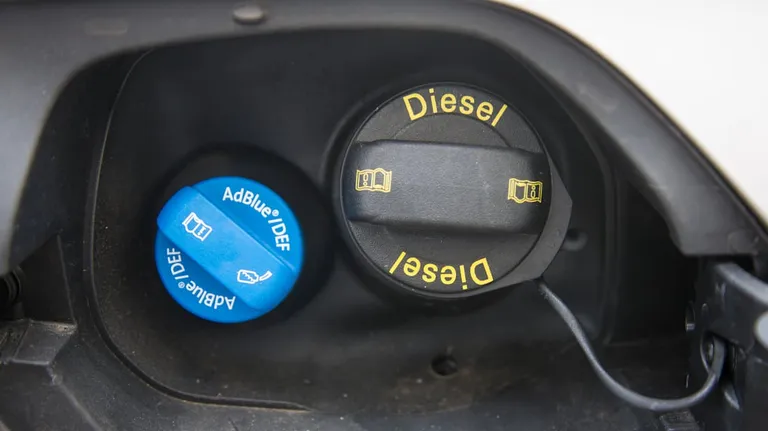
Vehicles requiring AdBlue have a separate tank, with a filler beside or close to the normal fuel cap. It has a bright blue cap that says AdBlue, and is much smaller diameter than a normal fuel filler. While that stops people putting diesel or petrol into the AdBlue tank, it doesn’t stop misfuelling the other way. In that situation, an engine must not be started as serious damage is likely, and the contaminated fuel needs to be drained.
In the motorhome world of 2021, AdBlue is the norm and required in the latest Fiat Ducato, Mercedes-Benz Sprinter and Volkswagen Crafter. The current Iveco Daily gets by with a Euro 5 engine, but the updated model due for release in early-to-mid 2021 will be Euro 6 and require AdBlue. Renault’s facelifted Master soldiers on with a Euro 5 engine and there’s no sign of anything else on the horizon. Ford’s latest Transit is Euro 6 and needs AdBlue, but is yet to reappear in the local motorhome marketplace.
In the campervan world of 2021, Toyota’s all-new HiAce still has Euro 5 diesel and petrol engines. Volkswagen’s new Transporter T6.1, however, is an oddity, having a Euro 5 diesel if you order 4Motion all-wheel drive, but a Euro 6 diesel needing AdBlue in 2WD guise. Go figure. The Ford Transit Custom is Euro 6 and an AdBlue drinker, but Renault’s Traffic appears to continue with a Euro 5 diesel.
While AdBlue/DEF is another expense and can be seen as one more thing to remember/fill/go-wrong, it’s here to stay. For the moment it’s less than one cent per kilometre (at the pump) and a small price to pay for cleaner air. And if you’re wondering just how much cleaner these new engines are than those ‘back in the day’, it’s claimed it would take 60 Euro 6 engines to equal the pollution of a diesel from 20 years ago…

